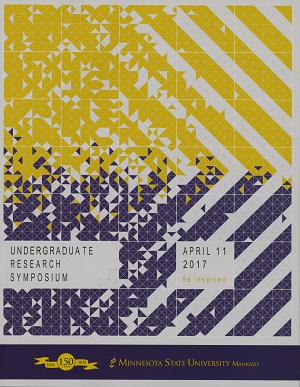Validating Instructional Hierarchy
Location
CSU Ballroom
Start Date
11-4-2017 2:00 PM
End Date
11-4-2017 3:30 PM
Student's Major
Psychology
Student's College
Social and Behavioral Sciences
Mentor's Name
Shawna Petersen-Brown
Mentor's Department
Psychology
Mentor's College
Social and Behavioral Sciences
Second Mentor's Name
Carlos Panahon
Second Mentor's Department
Psychology
Second Mentor's College
Social and Behavioral Sciences
Third Mentor's Name
Cassandra Schreiber
Third Mentor's Deparment
Psychology
Third Mentor's College
Social and Behavioral Sciences
Description
Efficiently and reliably identifying the most effective intervention is critical to timely remediation of reading difficulties. This study will utilize basic reading data and the Instructional Hierarchy (IH) to identify effective reading fluency interventions. This study will focus on the first two stages of the IH: acquisition and fluency. Students will be recruited from second and third grade classrooms because students at this age are generally learning how to read fluently. Baseline words correct per minute (WCM) will be obtained by reading three grade level passages for 1 minute each. Then, students will be exposed to two repeated reading interventions targeting the acquisition and fluency phases, respectively. The students will receive each intervention twice, and their average reading fluency gains within each intervention, from the first read to the final read, will be calculated. The intervention which results in the greatest average reading fluency gain will be identified for each student. We will then investigate whether initial fluency and accuracy according to baseline WCM is a reliable predictor of the most effective intervention. We will discuss the extent to which a brief reading assessment is a good predictor of the type of reading intervention from which students may benefit.
Validating Instructional Hierarchy
CSU Ballroom
Efficiently and reliably identifying the most effective intervention is critical to timely remediation of reading difficulties. This study will utilize basic reading data and the Instructional Hierarchy (IH) to identify effective reading fluency interventions. This study will focus on the first two stages of the IH: acquisition and fluency. Students will be recruited from second and third grade classrooms because students at this age are generally learning how to read fluently. Baseline words correct per minute (WCM) will be obtained by reading three grade level passages for 1 minute each. Then, students will be exposed to two repeated reading interventions targeting the acquisition and fluency phases, respectively. The students will receive each intervention twice, and their average reading fluency gains within each intervention, from the first read to the final read, will be calculated. The intervention which results in the greatest average reading fluency gain will be identified for each student. We will then investigate whether initial fluency and accuracy according to baseline WCM is a reliable predictor of the most effective intervention. We will discuss the extent to which a brief reading assessment is a good predictor of the type of reading intervention from which students may benefit.
Recommended Citation
Mikosch, Josie. "Validating Instructional Hierarchy." Undergraduate Research Symposium, Mankato, MN, April 11, 2017.
https://cornerstone.lib.mnsu.edu/urs/2017/poster-session-B/34



